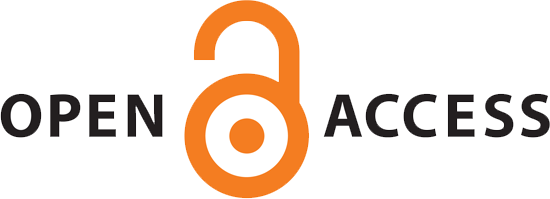Ultrasound-Based Prediction of Mask Ventilation and Laryngoscopy Difficulty in Patients Undergoing General Anesthesia Using Airway Assessment Criteria
Abstract
Background: Reflex Given the critical role of anatomical airway structures in tracheal intubation, this study aimed to predict the difficulty of mask ventilation and laryngoscopy using ultrasound-based airway evaluation criteria.
Methods: This cross-sectional study involved 205 patients undergoing tracheal intubation. During intubation evaluation based on the Cormack-Lehane classification, neck ultrasound was performed. The diagnostic value of neck sonographic parameters was assessed using receiver operating characteristic (ROC) analysis.
Results: According to the Cormack-Lehane classification, intubation was easy in 170 patients (82.9%) and difficult in 35 patients (17.1%). Ultrasound findings revealed statistically significant differences in all parameters, including neck circumference, between the easy and difficult intubation groups. All measured values were higher in the difficult intubation group.
Conclusion: The findings suggest that ultrasound is a useful, practical tool for predicting difficult intubation. However, due to study limitations such as the small sample size, further research is recommended.
[2] Cook TM, Woodall N, Harper J, Benger J; Fourth National Audit Project. Major complications of airway management in the UK: results of the Fourth National Audit Project of the Royal College of Anaesthetists and the Difficult Airway Society. Part 2: intensive care and emergency departments. Br J Anaesth. 2011; 106(5):632-42.
[3] Apfelbaum JL, Hagberg CA, Caplan RA, Blitt CD, Connis RT, Nickinovich DG, et al; American Society of Anesthesiologists Task Force on Management of the Difficult Airway. Practice guidelines for management of the difficult airway: an updated report by the American Society of Anesthesiologists Task Force on Management of the Difficult Airway. Anesthesiology. 2013;118(2):251-70.
[4] Adnet F. Difficult mask ventilation: an underestimated aspect of the problem of the difficult airway? Anesthesiology 2000; 92:1217–1218.
[5] Kim WH, Ahn HJ, Lee CJ, Shin BS, Ko JS, Choi SJ, et al. Neck circumference to thyromental distance ratio: a new predictor of difficult intubation in obese patients. Br J Anaesth. 2011;106(5):743-8.
[6] Etezadi F, Saeedinia L, Pourfakhr P, Najafi A, Khajavi M, Ahangari A, et al. Comparison of Four Methods for Predicting Difficult Laryngoscopy: A Prospective Study of Validity Indexes. Arch Anesth & Crit Care. 2018;4(3):483-487.
[7] Manno E, Navarra M, Faccio L, Motevallian M, Bertolaccini L, Mfochivè A, et al. Deep impact of ultrasound in the intensive care unit: The ‘ICU-sound’ protocol. Anesthesiology. 2012; 117:801–809.
[8] Pelosi P, Corradi F. Ultrasonography in the intensive care unit: looking at the world through colored glasses. Anesthesiology. 2012; 117:696– 698.
[9] Nair P, Mulimani S, Mantur J, Suntan A. Evaluation of Ultrasonography with Conventional Clinical Parameters for Predicting Difficult Laryngoscopy. Arch Anesth & Crit Care. 2023;10(1):36-42.
[10] Bajracharya GR, Truong AT, Truong DT, Cata JP. Ultrasound-Assisted Evaluation of the Airway in Clinical Anesthesia Practic. International J Anesthesiology & Pain Medicine. 2015; 1(1):2.
[11] Green L. Can’t intubate, can’t ventilate! A survey of knowledge and skills in a large teaching hospital. Eur J Anaesthesiol. 2009; 26:480–483.
[12] Khan ZH, Kashfi A, Ebrahimkhani E. A comparison of the upper lip bite test (a simple new technique) with modified Mallampati classification in predicting difficulty in endotracheal intubation: a prospective blinded study. Anesth Analg 2003; 96:595–599.
[13] Wu J, Dong J, Ding Y, Zheng J. Role of anterior neck soft tissue quantifications by ultrasound in predicting difficult laryngoscopy. Med Sci Monit. 2014; 20:2343–2350.
[14] Prasad A, Yu E, Wong DT, Karkhanis R, Gullane P, Chan VW. Comparison of sonography and computed tomography as imaging tools for assessment of airway structures. J Ultrasound Med. 2011; 30:965–972.
[15] Agarwal R, Jain G, Agarwal A, Govil N. Effectiveness of four ultrasonographic parameters as predictors of difficult intubation in patients without anticipated difficult airway. Korean J Anesthesiology. 2021;74(2):134-41.
[16] Ji C, Ni Q, Chen W. Diagnostic accuracy of radiology (CT, X-ray, US) for predicting difficult intubation in adults: A meta-analysis. J Clin Anesth. 2018; 45:79-87.
[17] Pournasrollah N. Confirming the accuracy of tracheal intubation with ultrasound and comparing it with capnography, Available from site: https://eprints.arums.ac.ir/9342/
[18] Benavides-Zora D, Jaramillo MC, Townsley MM, Franco V, González S, Hoyos C, et al. Diagnostic performance of airway ultrasound for the assessment of difficult laryngoscopy: A systematic review and meta-analysis. J Cardiothorac Vasc Anesth. 2023; 37(7):1101-1109.
[19] Wu H, Wang H. Diagnostic Efficacy and Clinical Value of Ultrasonography in Difficult Airway Assessment: Based on a Prospective Cohort Study. Contrast Media Mol Imaging. 2022 ;2022.
| Files | ||
| Issue | Article in Press |
|
| Section | Research Article(s) | |
| Keywords | ||
| Tracheal intubation Laryngoscopy Ultrasound Cormack-Lehane | ||
| Rights and permissions | |

|
This work is licensed under a Creative Commons Attribution-NonCommercial 4.0 International License. |




